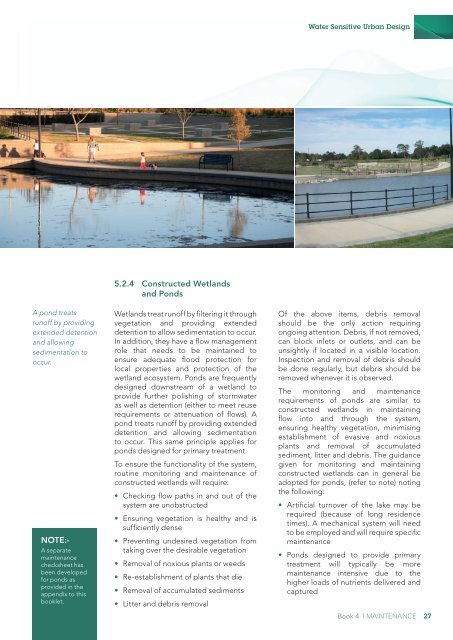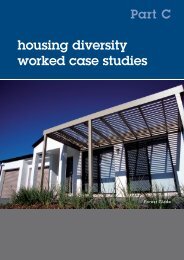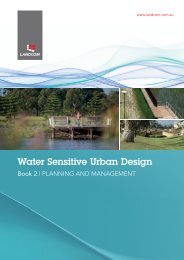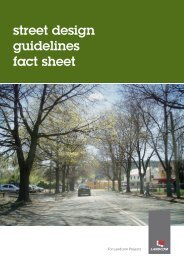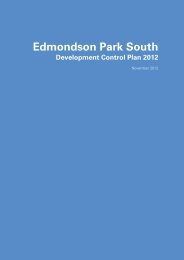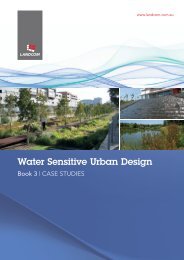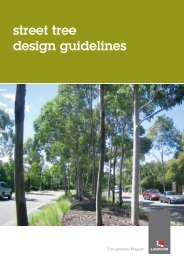Landcom Book 4 Maintenance - WSUD
Landcom Book 4 Maintenance - WSUD
Landcom Book 4 Maintenance - WSUD
Create successful ePaper yourself
Turn your PDF publications into a flip-book with our unique Google optimized e-Paper software.
Water Sensitive Urban Design<br />
5.2.4 Constructed Wetlands<br />
and Ponds<br />
A pond treats<br />
runoff by providing<br />
extended detention<br />
and allowing<br />
sedimentation to<br />
occur.<br />
NOTE:-<br />
A separate<br />
maintenance<br />
checksheet has<br />
been developed<br />
for ponds as<br />
provided in the<br />
appendix to this<br />
booklet.<br />
Wetlands treat runoff by filtering it through<br />
vegetation and providing extended<br />
detention to allow sedimentation to occur.<br />
In addition, they have a flow management<br />
role that needs to be maintained to<br />
ensure adequate flood protection for<br />
local properties and protection of the<br />
wetland ecosystem. Ponds are frequently<br />
designed downstream of a wetland to<br />
provide further polishing of stormwater<br />
as well as detention (either to meet reuse<br />
requirements or attenuation of flows). A<br />
pond treats runoff by providing extended<br />
detention and allowing sedimentation<br />
to occur. This same principle applies for<br />
ponds designed for primary treatment.<br />
To ensure the functionality of the system,<br />
routine monitoring and maintenance of<br />
constructed wetlands will require:<br />
••<br />
Checking flow paths in and out of the<br />
system are unobstructed<br />
••<br />
Ensuring vegetation is healthy and is<br />
sufficiently dense<br />
••<br />
Preventing undesired vegetation from<br />
taking over the desirable vegetation<br />
••<br />
Removal of noxious plants or weeds<br />
••<br />
Re-establishment of plants that die<br />
••<br />
Removal of accumulated sediments<br />
••<br />
Litter and debris removal<br />
Of the above items, debris removal<br />
should be the only action requiring<br />
ongoing attention. Debris, if not removed,<br />
can block inlets or outlets, and can be<br />
unsightly if located in a visible location.<br />
Inspection and removal of debris should<br />
be done regularly, but debris should be<br />
removed whenever it is observed.<br />
The monitoring and maintenance<br />
requirements of ponds are similar to<br />
constructed wetlands in maintaining<br />
flow into and through the system,<br />
ensuring healthy vegetation, minimising<br />
establishment of evasive and noxious<br />
plants and removal of accumulated<br />
sediment, litter and debris. The guidance<br />
given for monitoring and maintaining<br />
constructed wetlands can in general be<br />
adopted for ponds, (refer to note) noting<br />
the following:<br />
••<br />
Artificial turnover of the lake may be<br />
required (because of long residence<br />
times). A mechanical system will need<br />
to be employed and will require specific<br />
maintenance<br />
••<br />
Ponds designed to provide primary<br />
treatment will typically be more<br />
maintenance intensive due to the<br />
higher loads of nutrients delivered and<br />
captured<br />
<strong>Book</strong> 4 | MAINTENANCE 27


